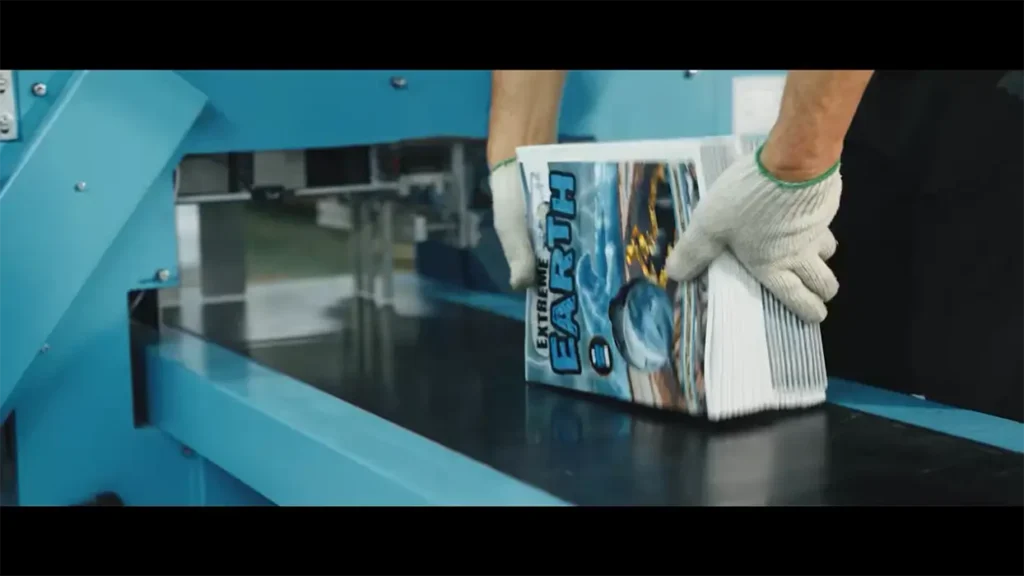Introduction
The book printing process is a fascinating and intricate journey from manuscript to finished product. Authors must understand this process to accurately translate their vision onto the printed page. This comprehensive guide delves into each step, providing authors with the knowledge they need to successfully navigate the world of book printing.

Preparing the Manuscript
Formatting Requirements
Before proceeding to the printing phase, authors must ensure their manuscript meets specific formatting requirements. This includes consistent font choice, proper margins, and appropriate line spacing. To enhance readability, it is typically recommended to use common fonts like Times New Roman or Arial, set 1-inch margins on all sides, and double space the text.
Proofreading and Editing
A meticulously proofread and edited manuscript is paramount. Authors should employ self-editing and professional editing services to eliminate typographical errors, grammatical mistakes, and inconsistencies. This step polishes the manuscript and prepares it for the next stage.
Creating a Print-Ready File
You must convert the final manuscript into a print-ready file. Commonly used formats include PDF and InDesign. These formats preserve the layout, fonts, and other design elements, ensuring that the printed version matches what you see on the screen.
Pre-Press
Typesetting and Layout Design
The typesetting process involves arranging the text and images in a visually appealing layout. Professional typesetting ensures the book’s interior is easily read and aesthetically pleasing. Layout design includes decisions about chapter headings, page numbers, and the overall look of each page.
Cover Design
A book’s cover is its first impression, and a compelling cover design can attract potential readers. Authors should work with experienced designers to create covers that reflect the book’s content and appeal to the target audience. Elements like typography, color scheme, and imagery play a crucial role.
Proofing and Revisions
Authors must review a proof copy of their book before printing. This stage allows them to catch any last-minute errors or design issues. Revisions can then be made to ensure the final product meets the author’s expectations.
Printing Process
Offset Printing
Offset printing is a traditional method in which ink is transferred from a plate to a rubber blanket and then onto the printing surface. This process is ideal for large print runs due to its cost-effectiveness and high-quality output.
Advantages of Offset Printing:
- High image quality
- Cost-effective for large quantities
- Wide range of paper types and finishes available
Disadvantages of Offset Printing:
- Longer setup time
- Not economical for small print runs
Digital Printing
Digital printing involves printing directly from a digital file. This method is suitable for short print runs and offers quick turnaround times.
Advantages of Digital Printing:
- Fast setup and printing
- Cost-effective for small quantities
- Easy to make revisions
Disadvantages of Digital Printing:
- Higher cost per unit for large quantities
- Limited paper and finish options
Binding and Finishing
Different Binding Options
Binding is a critical step in the book printing process, influencing the book’s durability and appearance. Common options include:
- Perfect Binding: Ideal for paperback books, where pages are glued together at the spine.
- Saddle Stitch: Suitable for booklets or smaller publications, where pages are folded and stapled together.
- Hardcover Binding: Offers a premium look with a sturdy, protective cover.
Trimming and Cutting
After binding, books are trimmed and cut to their final size. This step ensures that all pages are uniform and the edges are smooth.
Additional Finishing Options
Authors can enhance their books with various finishing options, such as embossing, foil stamping, and lamination. These techniques add a tactile and visual appeal, making the book stand out.
Distribution and Marketing
Printing Quantities and Inventory Management
Determining the right printing quantity is crucial for managing costs and inventory. Authors must consider their target audience, marketing plan, and storage capabilities.
Distribution Channels
Effective distribution ensures that books reach their intended audience. Common channels include:
- Bookstores
- Online retailers
- Direct sales through an author’s website
Marketing Strategies for Printed Books
Marketing is essential to drive sales. Authors should leverage social media, book signings, and press releases to generate buzz. Collaborating with influencers and obtaining book reviews can, in addition, significantly boost visibility.
Conclusion
Understanding the book printing process empowers authors to make informed decisions, ensuring their work is presented in the best possible light. From meticulous manuscript preparation to strategic marketing, each step plays a vital role in the journey from writer to published author. Authors can confidently bring their literary creations to life by mastering these elements.




